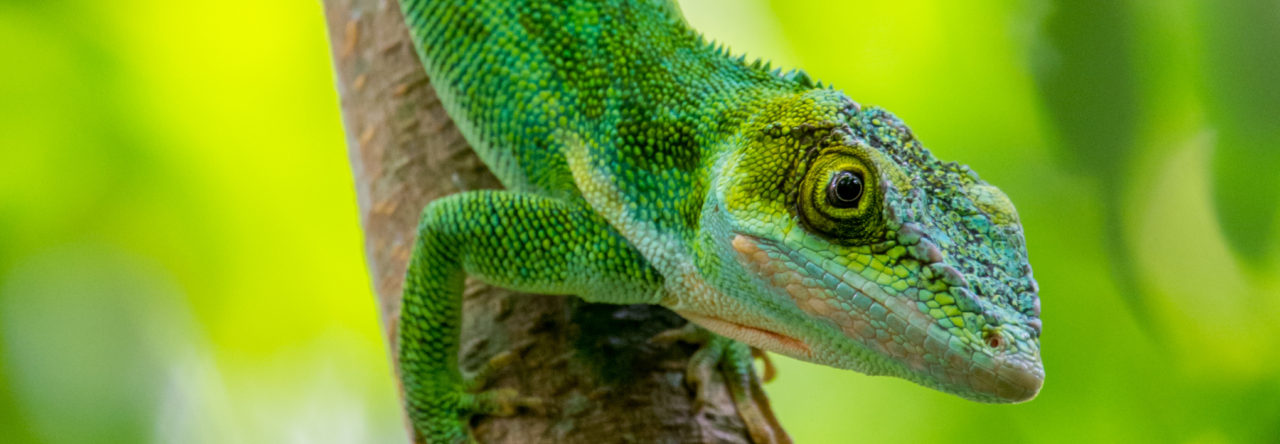Two recent talks at JMIH 2017 shed light on key morphological characters in anoles: toe pad shape and limb length. Travis Hagey presented his work which looks to shed light on why lizard toe pads are shaped the way that they are and addresses whether gecko and anole toe pads are convergent structures. Working with a team of undergraduates, Travis used geometric morphometrics to analyze the structure of toepads in a diverse group of geckos and anoles. Travis found that anole and gecko toe pads have a similar range of values for traits such as the placement of pads on the toes and the shape of the toes (skinny or fat) in relation to claws. However, anole toe pads formed a distinct cluster indicating that they occupy a unique area of trait space not used by geckos. This finding suggests that the divergent evolutionary history of anoles and geckos has resulted in independent evolutionary explorations of toe pad shape.
Immediately following Travis’ talk, Robin Andrews presented work investigating the embryological development of morphological characters in diverse lizard species. In anoles, consistent differences in the morphology of divergent species support the existence of different anole ecomorphs. Previous research by Sanger and colleagues has shown that the differences in limb-length between anoles of different ecomorphs have their origins early in embryonic development. These early differences in limb length continue throughout the development of anoles into hatchlings and adult forms, a pattern known as transpositional allometry.
Robin compared patterns of limb, tail, and head growth in early stage embryos of four different lizard species, including a chameleon, two geckos, and the brown anole (Anolis sagrei). She found that species-specific differences in limb and tail lengths were exhibited as soon as limb and tail buds emerged from the body and were both best characterized by the same pattern, transpositional allometry. Embryonic head growth, however, showed no specific pattern. Robin’s findings suggest that the adaptive evolution of adult morphology in anole ecomorphs as well as other diverse lizard species is underpinned by developmental reprogramming.
Travis Hagey, Jordan Garcia, Oacia Fair, Nikki Cavalieri, and Barb Lundrigan: Variation in Lizard Adhesive Toe Pad Shape
Robin Andrews: Developmental Origin of Limb Size Variation in Lizards











 Two years ago, McCranie and Kohler published The Anoles of Honduras: Systematics, Distribution, and Conservation(available
Two years ago, McCranie and Kohler published The Anoles of Honduras: Systematics, Distribution, and Conservation(available 

